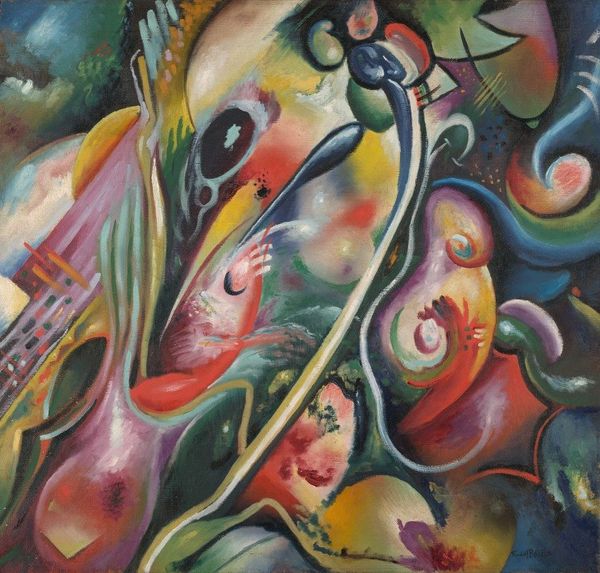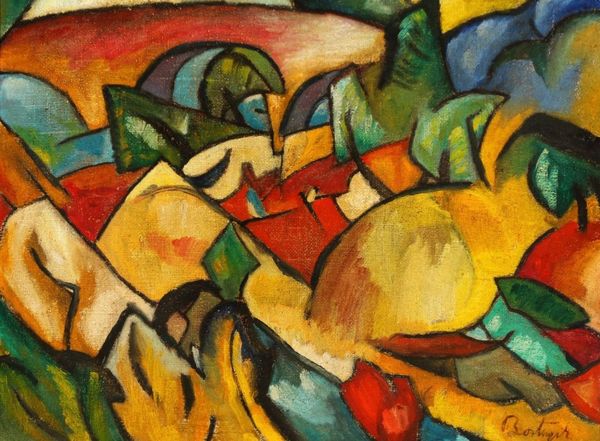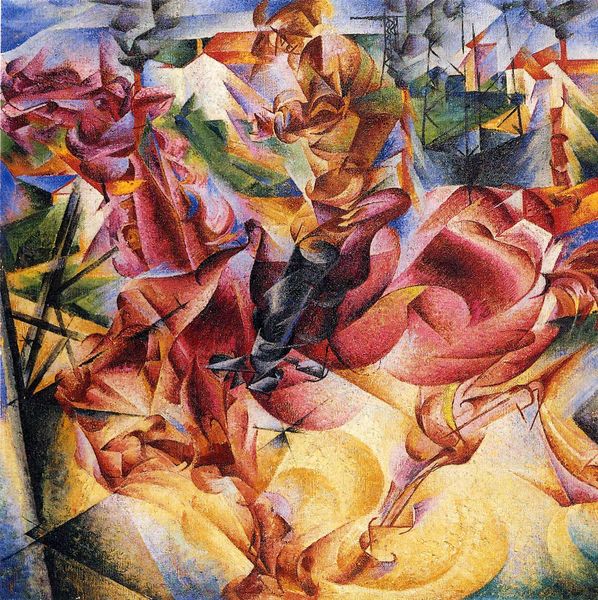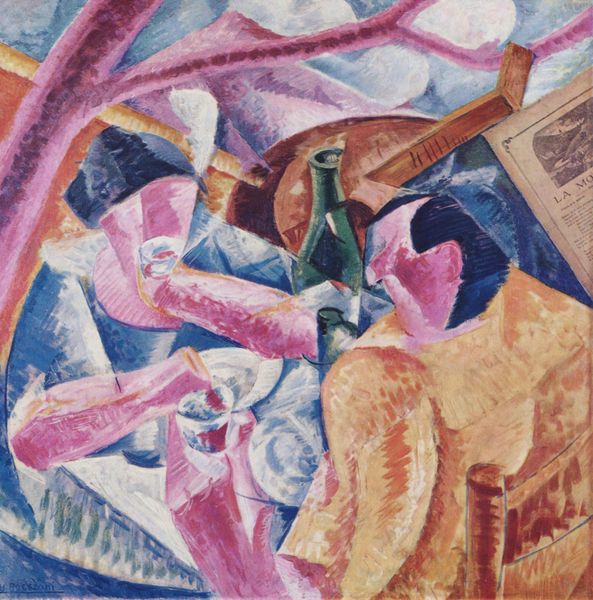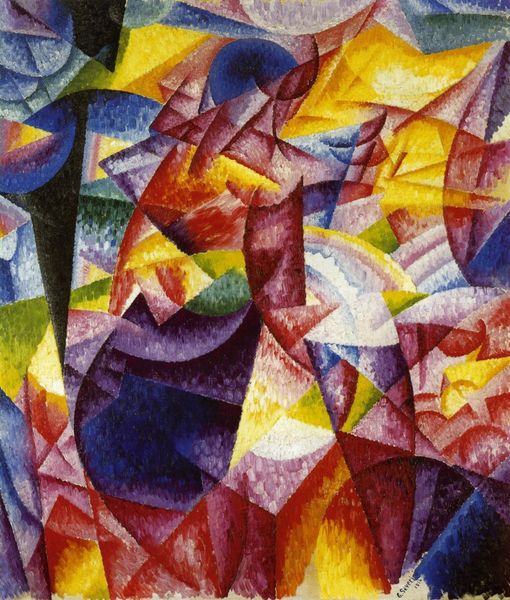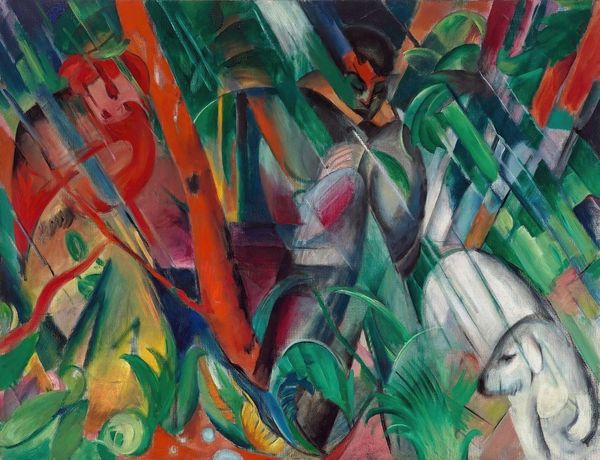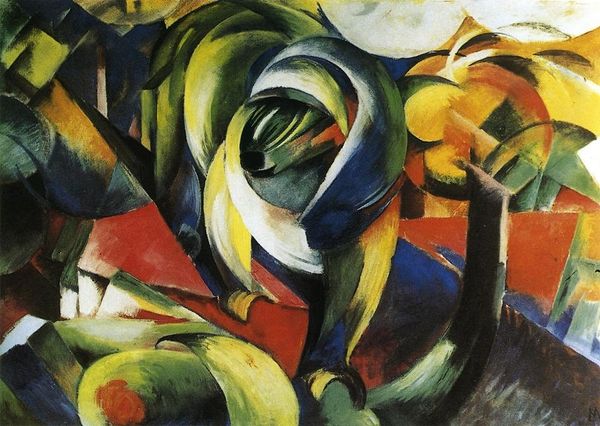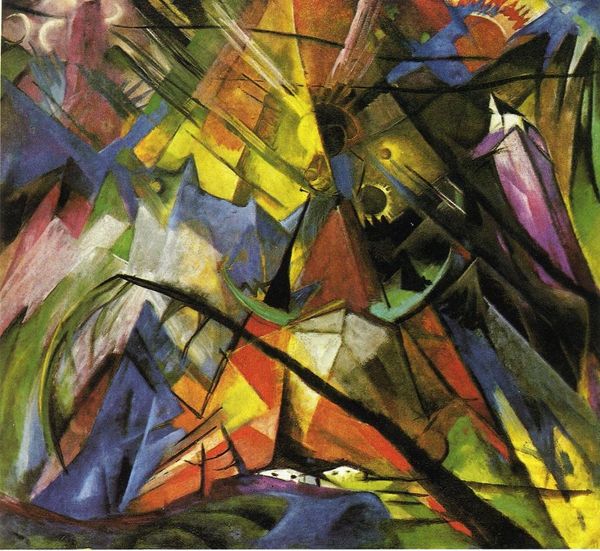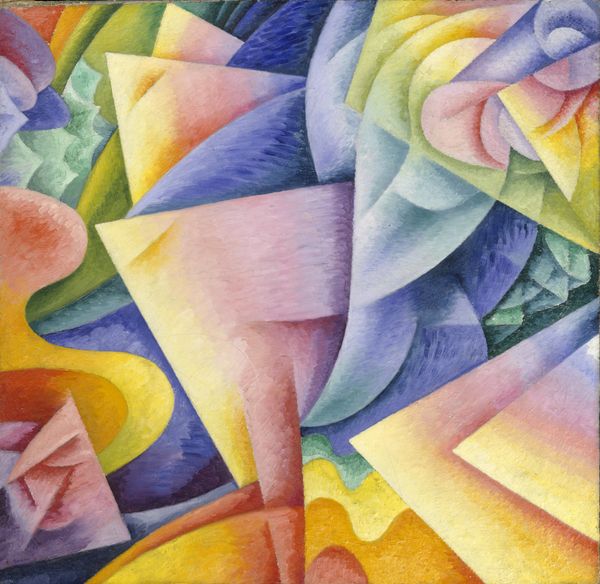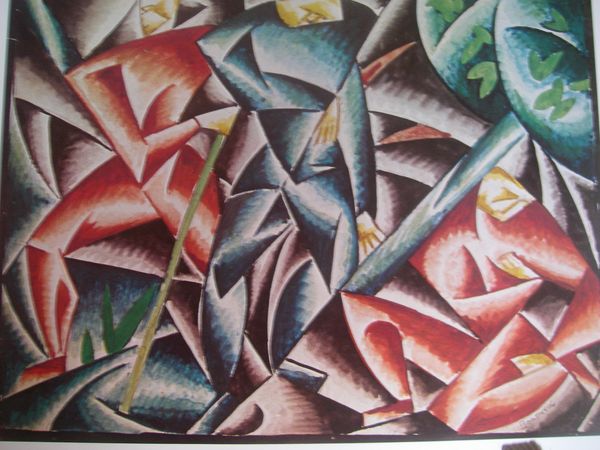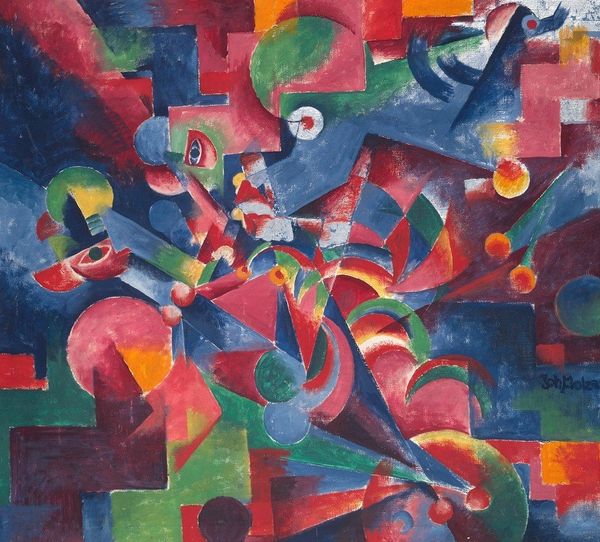
oil-paint
#
abstract painting
#
oil-paint
#
figuration
#
oil painting
#
geometric
#
abstraction
#
modernism
#
futurism
Copyright: Public domain
Curator: This vibrant oil painting is titled "Dynamism of a Human Body," executed by Umberto Boccioni in 1913. What are your initial impressions? Editor: Explosive! The dynamism is immediately apparent. It's a whirlwind of colors and shapes, pulling the eye in multiple directions simultaneously. The overall tone is restless, maybe even slightly violent. Curator: The painting certainly embodies the Futurist obsession with speed and modernity. Note how Boccioni abandons traditional representation to capture the essence of movement and energy. Editor: Yes, but in terms of composition, it's incredibly strategic. See how he employs those sharp, angular forms and juxtaposes them with the more curved shapes? There's a real tension created by that interplay. The colour palette is carefully orchestrated too—the dominance of reds and oranges suggests heat, power. Curator: Those choices reflect the cultural moment, absolutely. Post-industrial Europe, on the brink of war... There’s that hunger to break from the past, but also anxiety around what's coming. Boccioni uses the fragmented body as a symbol for the fragmented human experience under industrial capitalism, expressing hope with the depiction of movement. Editor: I see the formal connection too. How shapes echo in different areas; notice how the jagged form up here finds its echo down below. The painting coheres as more than just representation. Curator: But what representation remains shows a concern with humanity, too. This isn’t just about machines and the modern world, though these motifs do suggest so, Boccioni's "Dynamism of a Human Body" embodies the emotional weight of modernity—the excitement, fear, and ultimate transformation of the self. Editor: That push and pull you highlight also come through so much of the formal layout; the tension of near-repetition in shape. Fascinating how well the composition, and certainly the colors work as the carrier. Curator: Looking closely today really shows the lasting impression of the work. It continues to embody how cultural history becomes inscribed within physical form, and I thank you for sharing your understanding of composition and movement!
Comments
No comments
Be the first to comment and join the conversation on the ultimate creative platform.

